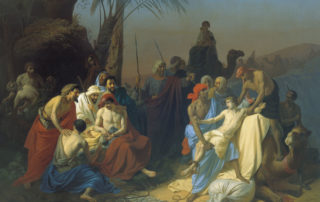Sukkot and the Standard Model
And ye shall take you on the first day the fruit of goodly trees, branches of palm-trees, and boughs of thick trees, and willows of the brook. Leviticus 23:40 During the Holiday of Sukkot (“Tabernacles”), the Jewish people are commanded to take together four species (arba’a minim): etrog (fruit of a citron tree), lulav (a branch of a date palm), ḥadassim (boughs from the myrtle tree), and aravot (branches of the willow tree),[1] and hold them together while waving with them in all six directions (na’anuim). As I wrote in my essay “Unified Field Theory… Theory and Practice,”[2] the four species, arba’a minim, also correspond to the four letters of the Tetragrammaton. According to the Arizal, this relationship is as follows: Letter of the TetragrammatonArba’a MinimYudḤadassimHehAravotWawLulavHehEtrogTable 1. Letters of Tetragrammaton and Arba’a Minim As I wrote in my earlier essays,[3] all four fundamental forces correspond to the four [...]








